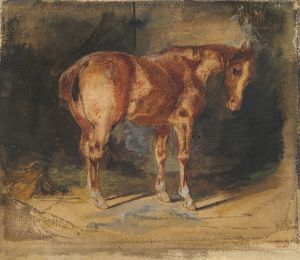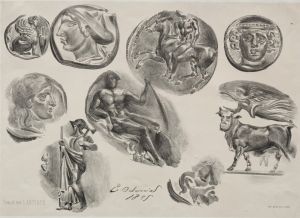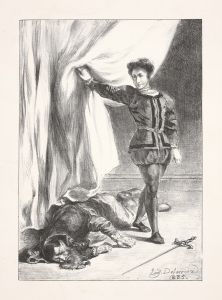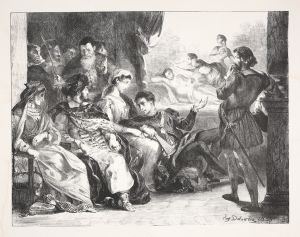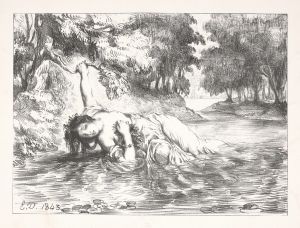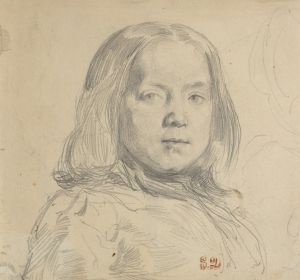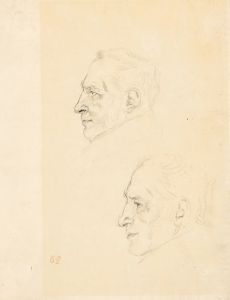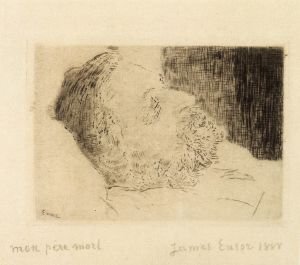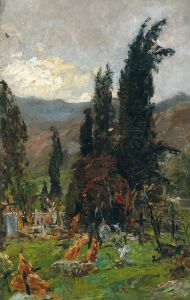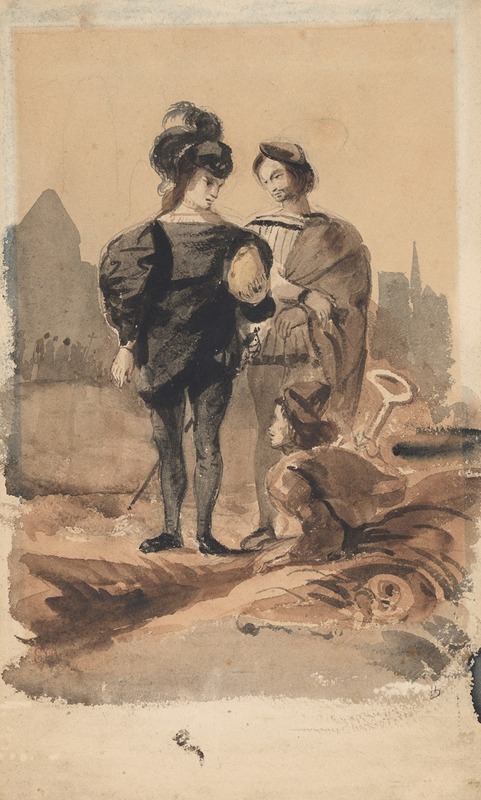
Hamlet and Horatio in the Graveyard
A hand-painted replica of Eugène Delacroix’s masterpiece Hamlet and Horatio in the Graveyard, meticulously crafted by professional artists to capture the true essence of the original. Each piece is created with museum-quality canvas and rare mineral pigments, carefully painted by experienced artists with delicate brushstrokes and rich, layered colors to perfectly recreate the texture of the original artwork. Unlike machine-printed reproductions, this hand-painted version brings the painting to life, infused with the artist’s emotions and skill in every stroke. Whether for personal collection or home decoration, it instantly elevates the artistic atmosphere of any space.
Eugène Delacroix's painting "Hamlet and Horatio in the Graveyard" is a significant work that captures a pivotal scene from William Shakespeare's tragedy "Hamlet." Delacroix, a leading figure of the French Romantic movement, was known for his expressive brushwork and vibrant use of color, and this painting is a testament to his ability to convey complex emotions and dramatic narratives.
The painting depicts the famous graveyard scene from Act V, Scene 1 of "Hamlet," where Prince Hamlet and his friend Horatio encounter two gravediggers at work. The scene is particularly notable for Hamlet's contemplation of mortality, sparked by the discovery of Yorick's skull, the former court jester whom Hamlet knew in his childhood. Delacroix captures this moment of existential reflection with a focus on the emotional intensity and philosophical depth of the characters.
In the composition, Hamlet is shown holding the skull, his expression a mix of melancholy and introspection, while Horatio stands beside him, observing the scene with a more reserved demeanor. The gravediggers, often depicted as comic relief in performances of the play, are present in the background, emphasizing the contrast between the mundane task of digging graves and the profound themes of life and death being contemplated by Hamlet.
Delacroix's use of color and light in the painting enhances the somber mood of the scene. The dark, muted tones of the graveyard setting serve as a backdrop to the more vividly rendered figures of Hamlet and Horatio, drawing the viewer's attention to their expressions and interactions. The artist's characteristic brushwork adds a sense of movement and energy, even in this moment of stillness and reflection.
This painting is part of Delacroix's broader engagement with literary themes, particularly those of Shakespeare, whose works he admired for their dramatic and emotional depth. Delacroix's interest in Shakespeare was shared by many artists and intellectuals of the Romantic period, who found in the playwright's works a rich source of inspiration for exploring the complexities of human nature and the tumultuous emotions that define the human experience.
"Hamlet and Horatio in the Graveyard" is housed in the Louvre Museum in Paris, where it continues to be appreciated for its artistic merit and its insightful interpretation of one of Shakespeare's most famous scenes. The painting is a testament to Delacroix's skill in translating literary themes into visual art, capturing the essence of the characters and the philosophical questions that lie at the heart of "Hamlet."
Through this work, Delacroix not only pays homage to Shakespeare but also contributes to the enduring dialogue between literature and visual art, demonstrating the power of painting to evoke the timeless themes of love, loss, and the search for meaning in an uncertain world.










